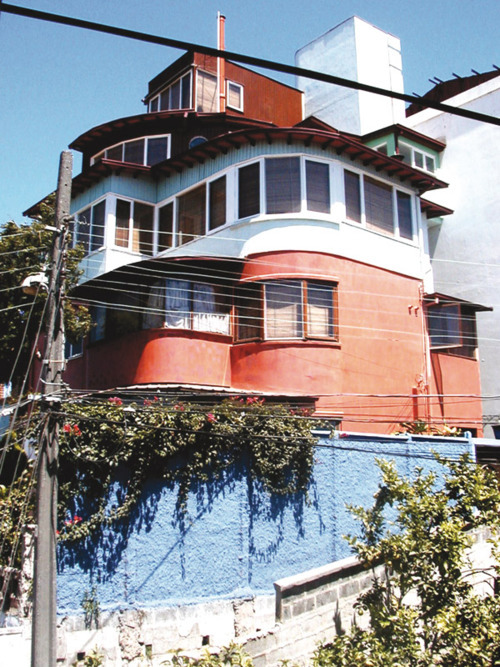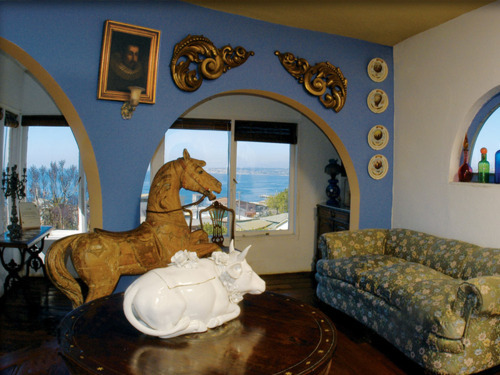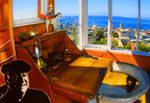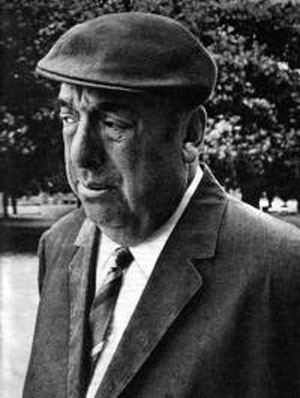Valentines from Chile

Feb. 14, 2012
VALPARAISO, Chile—-There is a love of stuff and stuff of love.
This was found to be true on my recent visit to “La Sebastiana,” the playful house of Chilean poet and writer Pablo Neruda.
The Nobel Prize winning author died in the autumn of 1973 and his five-story home which overlooks the Pacific Ocean has turned into a highly stimulating museum. “La Sebastiana” gets its name from Sebastian Collado, a Spaniard who built the home as a place to live after his children were married. One vision was to construct the third floor as a bird cage. Collado died before his dream was realized. Life can turn that way.
A mutual poet friend connected Sebastian’s family with Neruda.
Neruda moved to the port city of Valparaiso in 1961. He was growing weary of city life in the capital city of Santiago, about 75 miles east of Valparaiso down Route 68.
There’s a song in there somewhere.
Why is it difficult to follow the heart?
Just about every floor of “La Sebastina” spoke to me. Neruda was a collector of all kinds of stuff. Some would call it junk.
There were books, maps, music boxes and a wood carved horse from he salvaged from a carousel in Paris. These objects were words in his poetry.

Courtesy of the Pablo Neruda Foundation, photos not allowed in house.
Neruda saw beauty in everything.
Isn’t that love?
Old things, young things (he had three wives), rusty things, crazy things.
I noticed a faded paper coaster from the Johnson Line cruise ship in Sweden. It sat on his tiny home bar on the third floor. It wasn’t a tiki bar like mine, but it was close. Who was he with? Why did he save this?
How deep were the memories it served?
Neruda spent all of his 69 years searching for meaning.
He hung an old portrait of Walt Whitman in his house. A worker inquired if Whitman was his father. Neruda gently smiled and answered, “Yes, in poetry.”
My week long trip to Chile was filled with moments of wonder. The journalism professors at the Santiago bar Rapanul took me in as we talked late into the night with warmth and humor about music, food and politics. When their fellow music teachers arrived they thought I was David Gilmour of Pink Floyd. I wish you were here.
We shook hands and hugged as I found my cab, I will see them again.

David Gilmour or Hoekstra? (Photo by a German tourist.)
My seatmate on the eight hour flight from Miami to Santiago was a young BBC science journalist who was reporting on the largest telescope in the world, being built on the highest point of the Atacama desert near Chile’s border with Bolivia.
The telescope’s mission is to see the beginning of the universe. She would see the stars, I wondered how she would feel the stars. I thought of the powerful telescope with antennas like ! ! ! ! ! ! as I looked out Neruda’s study into the peaceful blue ocean. He had a 360 degree view of the water. Some of the windows in the house are shaped like skylights from a wandering ship.

Here is Neruda’s short poem, “Water::”
“Everything on the earth bristled, the bramble pricked and the green thread nibbled away, the petal fell, falling until the only flower was the falling itself.
Water is another matter, has no direction but its own bright grace,
runs through all imaginable colors, takes limpid lessons from stone, and in those functionings plays out
the unrealized ambitions of the foam.”
Yes.
The stars carry possibilities for tomorrow, and water holds yesterday’s tears.
And there is so much to love in the space between.
Now.

“In my house I have gathered toys big and small, without which I could not live.
The boy that does not play is not a boy, but the man who does not play has forever lost the boy that lived inside him,
and whom he will greatly miss.“—From Neruda’s “Bottles and Prow Statues.”


Leave a Response